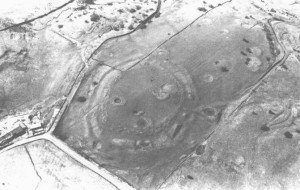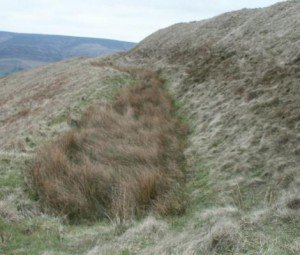‘The most prominent feature of this site is the ruin of a very large and strong wall, originally timber-laced and now partly vitrified, forming and enclosure of regular plan with parallel sides and semicircular ends, area about 0.2 hectares.
Blog Archive
Perthshire
Linked DocumentsBarry Hill Fort’The most prominent feature of this site is the ruin of a very large and strong wall, originally timber-laced and now partly vitrified, forming and enclosure of regular plan with parallel sides and semicircular ends, area about 0.2 hectares. Site GalleryGallery Empty
Highlands
Linked DocumentsArka Unskel FortArka Unskel is 2½ miles ESE of Arisaig at NM693839 and has also been known as Ard Ghaunsgoik and Ard Ghamhgail. Described as on a promontory on the north side of Loch nan Uamh with a heavily vitrified wall. Clickhimin BrochThis site was occupied in several periods, originally late Bronze age between …
Arka Unskel Fort
Arka Unskel is 2½ miles ESE of Arisaig at NM693839 and has also been known as Ard Ghaunsgoik and Ard Ghamhgail. Described as on a promontory on the north side of Loch nan Uamh with a heavily vitrified wall.
East Yorkshire
Site GalleryGallery Empty
Lancashire
← BrigantiaLinked DocumentsThe Brigantes of LancashireAn interesting heading in Robert Morden’s map of Lancashire (1695) places “The Brigantes” in Lancashire. Worth investigating to try to understand exactly what Robert Morden was trying to portray here.Castercliff Hill FortThis denuded hillfort is oval and encloses almost two acres. The defences comprise triple circuits of bank and ditch, …
South Yorkshire
The county of South Yorkshire
North Derbyshire
The transformation of North Derbyshire from 50AD to the present is a fascinating journey through time, reflecting broader historical shifts in Britain. Initially, during the Roman conquest of Britain, Derbyshire fell under the influence of the Roman Empire, becoming part of the province of Flavia Cæsariensis.
Northumberland
The county of Northumberland, with its rich tapestry of history, has undergone significant transformation since 50 AD. Initially, under Roman occupation, Northumberland was a frontier zone, where Hadrian’s Wall marked the edge of the Roman Empire. Post-Roman Britain saw the region become a part of the Anglo-Saxon kingdom of Northumbria, a name meaning ‘north of the Humber’, reflecting its vast expanse.







